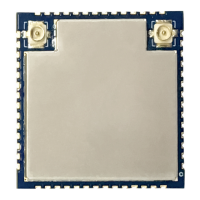
Do you have a question about the Hi-Link HLK-7628D and is the answer not in the manual?
| Model | HLK-7628D |
|---|---|
| Category | Control Unit |
| Chipset | MT7628DAN |
| CPU Architecture | MIPS 24KEc |
| CPU Frequency | 580 MHz |
| RAM | 64 MB |
| Flash Memory | 16 MB |
| Wi-Fi Standards | 802.11b/g/n |
| Wi-Fi Frequency | 2.4 GHz |
| Input Voltage | 5V |
| USB Ports | 1 |
| Operating Temperature | -20°C to 70°C |
| Efficiency | 85% |
| Protection | Over-voltage, Over-current |
Lists key features like processing capability, wireless rate, supported standards, interfaces, and OS.
Shows front and back views of the HLK-7628D module.
Illustrates the module's internal architecture and key components.
Depicts the module's peripheral interface connections and common usage scenarios.
Details module type, chip, kernel, frequency, storage, flash, temperature, humidity, and dimensions.
Lists supported interfaces like WiFi, Ethernet, UART, SPI, I2C, I2S, PWM, and GPIO.
Specifies input voltage, no-load operating current, and supply current requirement.
Provides detailed RF parameters for 802.11b, 802.11g, and 802.11n standards.
Visual representation of module pins and their labels.
Details pin names, types, functions, and default features for serial passthrough firmware.
Provides detailed mechanical dimensions of the module in millimeters.
Outlines the recommended temperature profile for reflow soldering to prevent damage.
Compares module chip functions with GPIO assignments for OpenWrt.